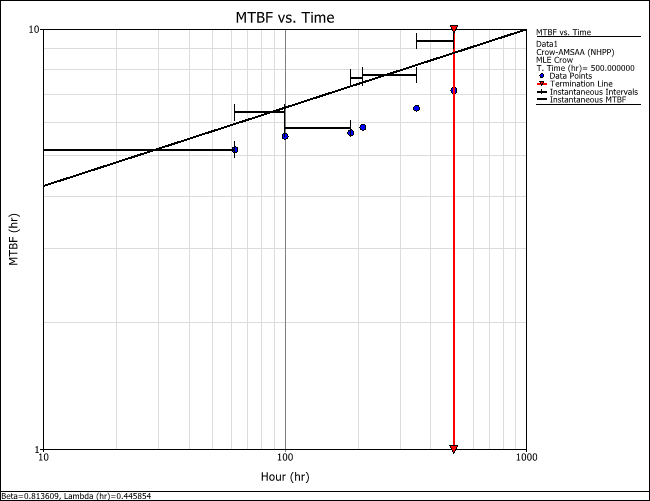arrow_back_ios
Main Menu
arrow_back_ios
| Interval # | Interval Length in Flight Hours | Failures in Interval |
| 1 | 0 - 62 | 12 |
| 2 | 63-100 | 6 |
| 3 | 101 - 187 | 15 |
| 4 | 188 - 210 | 3 |
| 5 | 211 - 350 | 18 |
| 6 | 351 - 500 | 16 |
A standard folio data sheet configured for grouped failure times data type is created by selecting Times-to-Failure Data > Grouped Failure Times on the first page of the Project Item Wizard window, as shown next.

The data set is then entered and the Crow-AMSAA (NHPP) model is selected for analysis, as shown next.
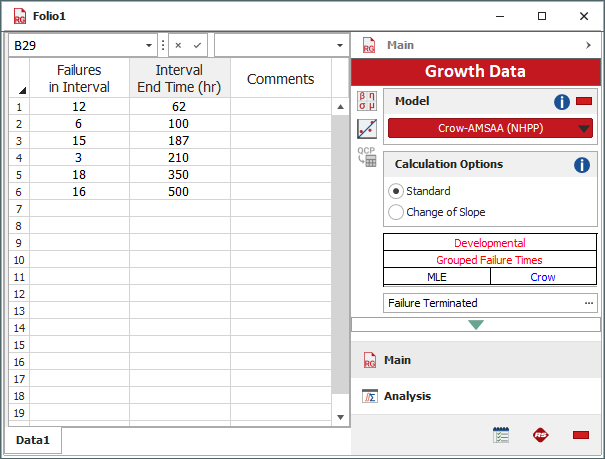
After analyzing the data, the results summary shows that the demonstrated failure intensity (DFI) value at the end of the 28 hours of testing is 4.4947.
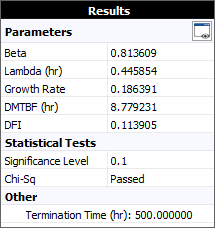
This can also be seen by using the Quick Calculation Pad (QCP). Since the test ended at 28 days, the DFI is equal to the instantaneous FI at 28 days, as shown next.
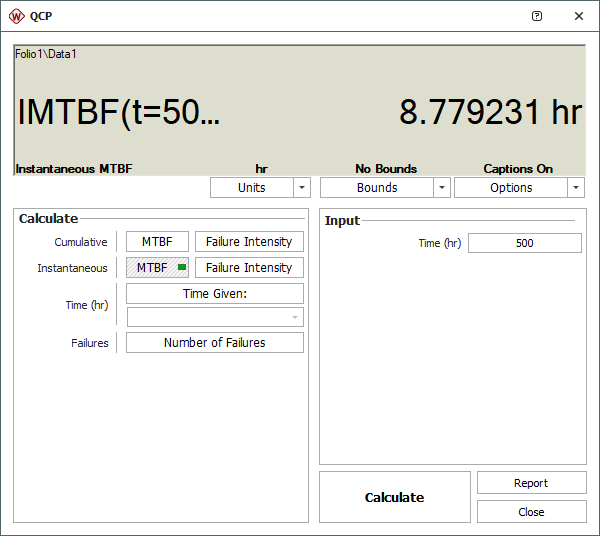
A plot of the MTBF vs. time is shown next. The plot shows the mean time between failures plotted against time. The horizontal lines represent the instantaneous MTBF over the marked interval. The points represent actual failures in the data set.
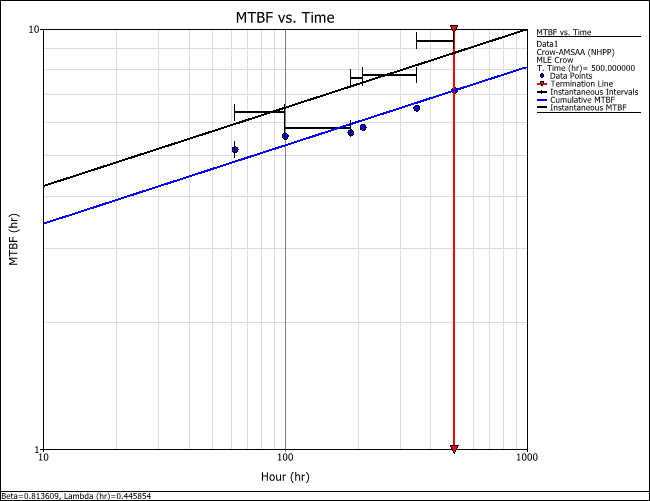
The cumulative MTBF line is then removed by right-clicking the plot.
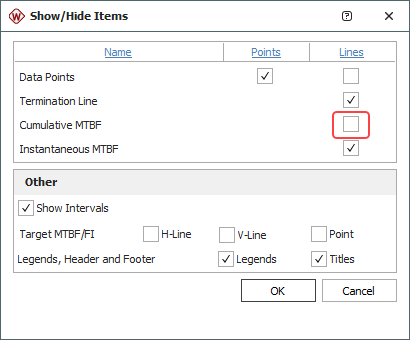
The plot now looks like this.
